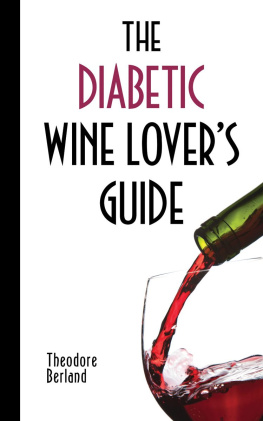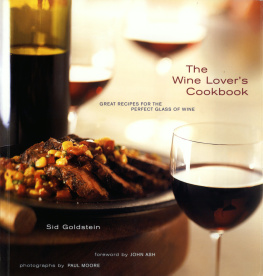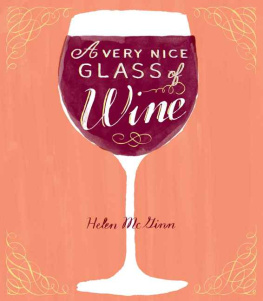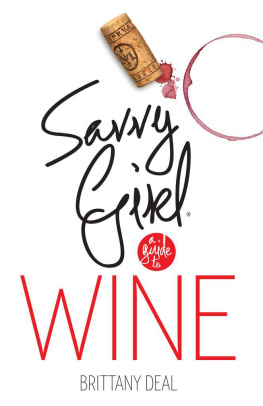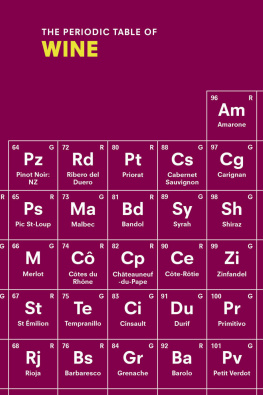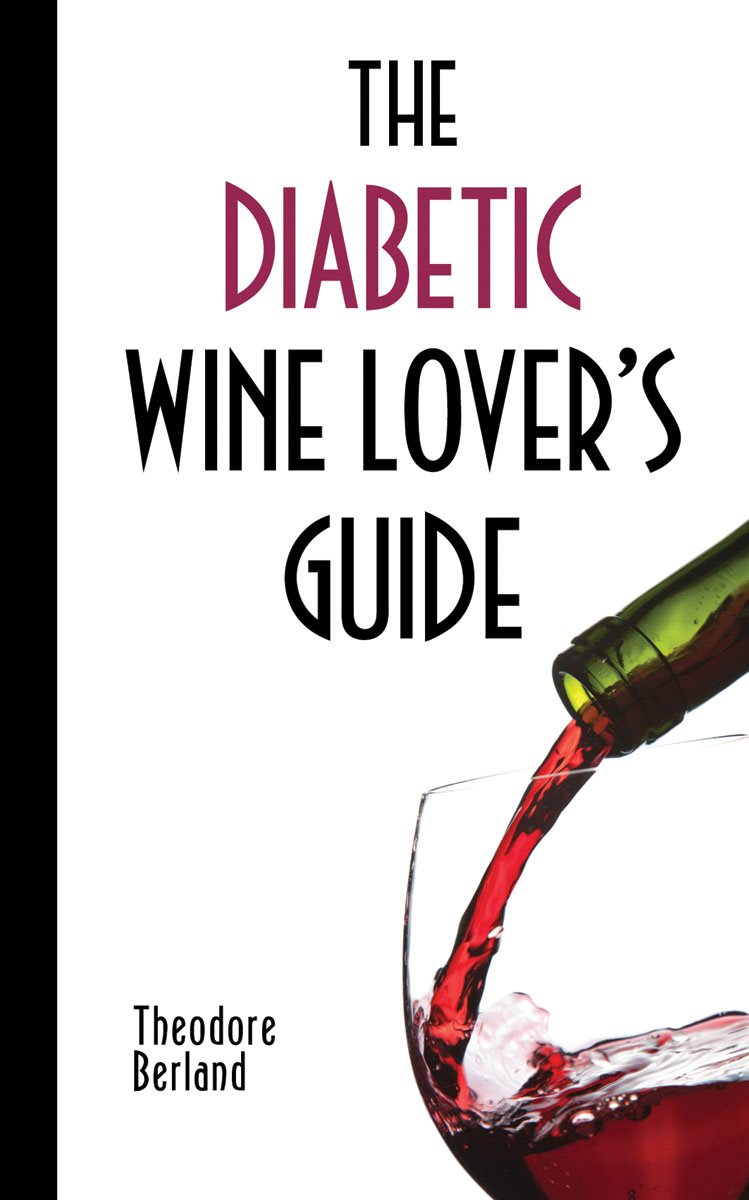

The information in this book is generic in nature and has been gathered from a wide variety of sources. Neither the author nor the publisher is engaged in providing medical advice. Seek the advice and counsel of your medical professional regarding the application of any information in this book in your personal life. If you are an alcoholic or otherwise addicted, read no further.
Copyright 2015 Theodore Berland. All Rights Reserved. Except as permitted under the Copyright Act of 1976, no part of this publication may be reproduced, distributed, or transmitted in any form or by any means, or stored in a data base or retrieval system without the prior written permission of the copyright holder.
Published in the United States of America by
Dudley Court Press
PO Box 102
Sonoita, AZ 85637
www.DudleyCourtPress.com
ISBN: 9781940013114
LCCN: 2015936875
Publishers Cataloging-in-Publication Data:
Berland, Theodore, 1929
The diabetic wine lovers guide / Theodore Berland. Sonoita, Arizona : Dudley Court Press, [2015]
pages ; cm.
ISBN: 978-1-940013-11-4
Summary: The author shows that moderate consumption of dry red wine can improve your health, even if you are diabetic or pre-diabetic.Publisher.
1. DiabetesDiet therapy. 2. DiabetesNutritional aspects. 3. DiabeticsNutrition. 4. DiabeticsAlcohol use. 5. Red winesTherapeutic use. 6. Red winesHealth aspects. 7. WineTherapeutic use. 8. WineHealth aspects. 9. Self-care, Health. I. Title.
RM662 .B47 2015
616.4/620654dc23
2015936875
1504
I believe that we should intensively promote the therapeutic uses of wine. This would involve education of hospital personnel, physicians, and patients.
Dr. Robert C. Stepto, M.D., Ph.D., University of Illinois School of Medicine, Chicago Board of Health.
WINE FOUND TO REDUCE DEATH BY DIABETES
Moderate wine consumption has been shown to decrease the risk of cardiovascular events and death in type 2 diabetes sufferers.
London, March 11, 2014. According to research carried out by Advance the first and largest research study into diabetes patients with type 2 diabetes benefitted from moderate consumption of alcohol, particularly wine, which appeared to be linked to a decreased risk for cardiovascular events and mortality, as reported by health news site healio.com.
Researchers drew upon data collected from 11,140 patients from 20 different countries who had enrolled in the Advance trial to obtain participants alcohol consumption and the type of alcoholic beverage consumed and then categorised it as nil, moderate or heavy.
Heavy consumption was defined as more than 21 drinks per week for men and more than 14 drinks per week for women; moderate consumption was defined as 21 or fewer drinks per week for men and 14 or fewer alcoholic drinks per week for women.
The researchers found that, following a five year follow up, there were 1,031 (9%) deaths, 1,147 (10%) cardiovascular events (CV) and 1,136 (10%) microvascular complications.
Statistics revealed that patients who drank moderately had fewer CV events, less microvascular complications and lower mortality rates, with patients who mainly drank wine experiencing the most pronounced benefits, according to a report by Healio.com. The benefits did not extend to those with heavy alcohol consumption, which instead saw an increased risk of CV events and death.
However researchers were keen to stress that the potential benefits must be weighed against the possible adverse effects of alcohol, such as the increased risk of certain cancers.
A spokesperson for the research team said: In light of these caveats, it would be premature to make any firm clinical recommendations regarding alcohol consumption by patients with type 2 diabetes. Nevertheless, the current study finds no grounds to discourage mild to moderate alcohol consumption, at least in terms of its vascular effects.
by Lauren May
The Drinks Business
Reprinted with permission
Contents
Preface
Welcome.
The late Harvey Posert, a dear friend whom I worked with and admired for many years (and who was a diabetic), suggested that I write this book. He was recognized as a visionary in the California wine industry, having been head of public relations, for both the Wine Institute of California and the Robert Mondavi Winery. In his retirement he supervised the marketing and publicity effort that launched Bronco Winerys Charles Shaw label and thus Trader Joes Two-Buck Chuck as a wine sales phenomenon. Sadly, he died in September 2014, just as this book was entering production.
My interest in wine and health is not new. In 1968 I was given the privilege of creating and organizing a wine lovers dream: the International Symposium on Wine and Health, held at the University of Chicago. It became a reality in part because of Harvey and our close working relationship and in part because I am a well-known, much published medical writer. Even more importantly, we had the approval and encouragement of Dan Edelman, Harveys employer at the time, and the support of Harry Serlis, president of the Wine Institute, which footed the bill.
Dr. Salvatore Pablo Lucia, professor of medicine at the University of California School of Medicine and Hospital, San Francisco, agreed to chair the event. He had an international wine-and-health reputation and attracted researchers on the subject from Europe and America to come to Chicago and present their findings.
My next effort was coordinating The National Study on the Medical Importance of Wine. It was organized as panels of experts (such as Morris Fishbein, editor of The Journal of The American Medical Association) working together at various locations to review and discuss wine-and-health research findings.
Proceedings of the symposium, published in the volume Wine and Health, it changed attitudes towards wine in America and abroad.
The paradox:
The French generally eat foods that contain high amounts of cholesterol and saturated fats (think brie, butter, egg yolks, heavy cream, marbleized beef);
They consume rather ample quantities of wine (mostly French, of course);
Yet their incidence of heart disease is surprising low.
The easiest explanation is that wine protects the hearts of the French (and others who drink it)an explanation verified by subsequent research studies.
Theodore Berland
Chicago, 2015
Introduction
Let me stress at the outset that the material in this book is not intended as medical advice. This can be obtained only from your physician(s).
Rather, the purpose of this book is to acquaint you and your medical advisor with facts, concepts, and important research findings relative to the moderate consumption of dry wine by diabetics.
The data presented here were gathered from the most reliable sources available to me. The reports of research on wine and health in are but a sampling. The numbers of scientists now conducting research on aspects of this subject are multiplying in number and spreading quickly across the globe. Therefore, it is impossible to present all of todays research reports through the medium of a book, because of the time constraints of publication.

